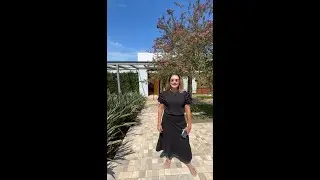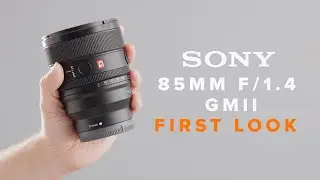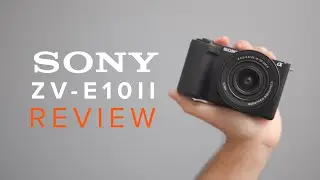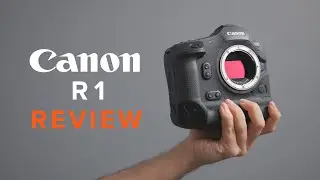Sony A7s III Review - The Best Video Performance Available?
We review the Sony A7s III - is it the best video shooter available?
Learn more about the Sony A7s III: https://bit.ly/Sonya7sIII
Like us on Facebook: http://fb.com/digidirect
Follow us on Instagram @digidirect and Twitter @digidirect_AU
Intro - 0:00
Build - 0:39
Sensor - 2:49
Stills - 3:15
Low Light Performance - 3:59
Rolling Shutter - 4:25
Image Stabilisation - 4:53
Autofocus Tests - 5:36
AF Rack Focus Speeds - 6:05
More Eye AF tests - 6:19
Video Specs - 6:49
Overheating - 7:21
Compression & other video features - 8:16
Conclusion - 9:18
Today we’re looking at the brand-new Sony A7s III, a long awaited update to Sony’s flagship video-focused full frame camera. This camera comes with a 12 MP sensor, which is pretty low resolution for stills. As such, while I will touch on the photographic aspects of this camera, much of this will be focused on video. Without any further ado, let’s jump into the body of the A7S III
Physically speaking, this is classic design from the Sony A7 series, very similar to what we’ve seen before. The camera has a quality build, a nice array of buttons including a joystick, good dials, a nice large grip, and it’s fully weather sealed. One excellent feature considering the video-centric nature of this camera is a fully articulating screen! Other screen improvements are that this is a full touchscreen where you can scroll through menus, operate quick menus and so on. We also have a full menu redesign here, with nested menus in a vertical scroll display. This is a significant improvement, this change makes the A7s III much more easy to use. We also get Dual Card slots, and each of these slots actually fit both UHS-II SD cards and CF Express Type A. On the other side we have mic, headphone, USB-C and multiport, plus a full-size HDMI port. Finally, we have the new-ish FZ100 battery in here which keeps the camera going for quite a while, I was impressed with the battery life.
So as mentioned, the A7S III has a 12 MP sensor, and here’s the only real discussion I’ll make about stills shooting on this camera. While 12 MP is a lot lower resolution than many cameras these days, the stills performance is still very high. If you’re a video shooter who wants some stills capability, you don’t need a separate camera.
Now, the advantage of that lower resolution sensor is two-fold. Firstly, it means the pixels are larger and collect more light, allowing for the A7S’s legendary low light performance, which is very much on display here. Secondly, the lower resolution means there is less data to readout from the sensor, which is why Sony has been able to hit such impressive video specs which we’ll discuss soon. But it’s also allowed Sony to double the readout speed from the sensor which means we see big improvements to rolling shutter.
The camera has in-body image stabilisation rated for 5.5 stops, which is of course good for handheld video shooting. Sony is introducing a new optional Active mode which will improve the stabilisation quality for larger movements at the expense of a slight 1.13x crop. Overall the stabilisation does a good job.
Sony has brought all the market-leading autofocus tech from their other cameras to bear here on the A7s III, meaning that this thing focuses like a dream. It has a 759-point phase detect AF system that is extremely fast and responsive, with exceptional tracking features including touch tracking, and a very sticky Eye AF. You can also adjust the speed at which the camera changes focus.
The A7S III can shoot 10-bit 4:2:2 internal video at 4K at up to 120 fps. And while 4K 120 does have a very small 1.1x crop, at 60p or lower there is no crop at all. Even better, there are no overheating issues with the A7s III! You can shoot in 4K all day with the A7s III and not have it overheat. This level of reliability is excellent, considering the high specs we’re discussing. Also, the camera has no video record limit, so feel free to shoot longer than 29 minutes. At 1080 the camera can shoot 240 fps for super slow mo.
There are a range of bitrates you can shoot this footage at, topping out at 600 megbits per second with the new XAVC S-I encoding, which is All-I H.264. There’s also XAVC HS for H.265 encoding too, so there’s lots of new compression options here. The camera has S-Log2, S-Log3 and HLG picture profiles for grading, and provides a super wide 15 stops of dynamic range. Plus, you can output 16-bit Raw at up to 4K 60 via that full-size HDMI port.
In conclusion, if you are primarily a video shooter, the A7s III is the best cameras on the market for you. The camera is built well with dual card slots, a fully articulating screen, full size HDMI and improved menus, has very low rolling shutter, a functional in-body image stabilisation system, exceptional autofocus, and some of the most impressive 4K video features to date that work with no record limit and without the threat of overheating, plus the series’ legendary low light performance































